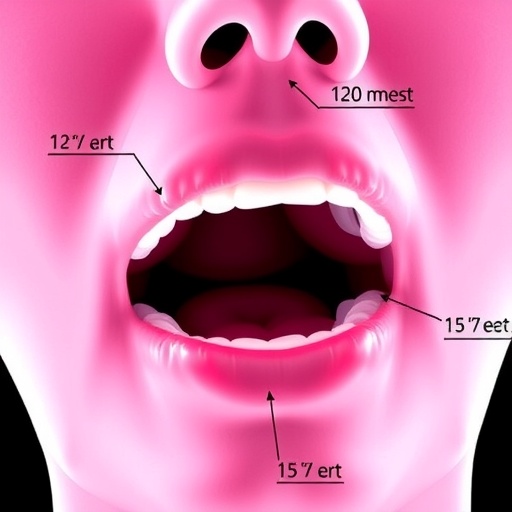Overall death rates from breast cancer fall in the EU, but rise in Poland
Death rates from breast cancer are predicted to fall in all European Union (EU) countries in 2019 with the exception of Poland, according to new research published in the leading cancer journal Annals of Oncology [1] today (Tuesday).
In their annual predictions for cancer deaths in the EU, Carlo La Vecchia (MD), Professor at the School of Medicine, University of Milan (Italy), and colleagues predict that this year death rates from breast cancer will fall by nearly nine per cent in the EU as a whole compared to 2014. In Poland they will rise by just over two per cent.
However, the researchers warn that although age standardised death rates [2] from breast cancer have fallen from 14.6 per 100,000 of the population in 2014 to a predicted 13.4 per 100,000 in 2019, the actual numbers of deaths from the disease continue to rise due to the increasing numbers of elderly people. Breast cancer remains the second highest cancer killer in women after lung cancer.
“In 2014 there were 92,000 deaths from breast cancer in Europe and in 2019 we are predicting 92,800,” said Prof La Vecchia. “This means the burden of the disease will continue to increase, with consequent implications for public health and costs to society.
“The improvements in death rates from breast cancer are due to national screening programmes, early diagnosis and improvements in the management and treatment of the disease. The most favourable trends were in women aged 50-69, which is the age group generally targeted by organised screening.”
Compared to the period between 2010-2014, age standardised death rates from breast cancer are predicted to fall by 16% in 2019 in women aged between 50-69 years, but by only 6% in women aged between 70-79 years.
“The implementation of population-based organised breast cancer screening in the EU has greatly improved between 2007 and 2016 with many more countries implementing programmes and many more women being screened. Thus, it may be too early to observe a beneficial effect from this in the 70-79 age group. This may also be the age group that benefits least from improvements in therapies as other health conditions and problems may prevent their use in older women,” said Prof La Vecchia
“Poland and other eastern European countries do not have favourable predicted patterns in breast cancer deaths, suggesting the need to improve breast cancer diagnosis and treatment in these countries.”
The researchers looked at cancer death rates in the EU 28 Member States [3] as a whole and also in the six largest countries – France, Germany, Italy, Poland, Spain and the UK – for all cancers, and, individually, for stomach, intestines, pancreas, lung, breast, uterus (including cervix), ovary, prostate, bladder and leukaemias for men and women [4]. This is the ninth consecutive year the researchers have published these predictions. Prof La Vecchia and his colleagues had collected data on deaths from the World Health Organization from 1970 to 2014.
Of the six largest countries, the UK has the greatest predicted decrease in breast cancer deaths for 2019 (13%), followed by France (10%), Germany (9%), Italy (7%), Spain (5%), while in Poland there is a predicted 2% increase.
The researchers predict there will be 1.4 million deaths from all cancers in the EU in 2019 (787,000 in men, 621,900 in women), an increase of about 4.8% from 1.35 million in 2014. But there will be decline in the age standardised rate from 139 per 100,000 men in 2014 to 131 per 100,000 in 2019 (a 6% fall) and from 86 per 100,000 women to 83 per 100,000 women (a 3.6% fall).
Lung cancer remains the biggest killer in both sexes, with 183,200 deaths in men predicted for 2019 and 96,800 predicted in women. In men the death rates are falling, from 36 per 100,000 in 2014 to 32 per 100,000 in 2019 (9% drop). However, the rates are still rising in women from 14.2 per 100,00 in 2014 to a predicted 14.8 per 100,000 in 2019 (4% increase).
Of the ten cancers the researchers investigated, pancreatic cancer was the only other not showing a favourable trend. In men rates will be stable in 2019 (age standardised rate of 7.92 per 100,000; 45,600 deaths), while in women there will be an increase of 1.6% (age standardised rate of 5.57 per 100,000; 45,100 deaths). [4]
“This probably reflects the different trends in smoking, which is the main risk factor for this cancer,” said Prof La Vecchia. “In addition, overweight and diabetes – which are linked to pancreatic cancer – have increased, and progress in this cancer is hampered by the fact that research into preventing and treating it is underfunded, particularly because there are few long-term survivors and, consequently, few patient advocates pressing for improvements.”
The researchers say that compared to a peak rate of cancer deaths in 1988, over five million cancer deaths have been avoided in the EU in the 31-year period up to 2019. Of these, 440,000 deaths from breast cancer were prevented. In 2019 alone, a total of 360,000 deaths from cancer are predicted to be avoided (237,000 in men and 122,000 in women).
Co-author, Fabio Levi (MD), Emeritus Professor at the Faculty of Biology and Medicine, University of Lausanne (Switzerland), said: “Lung cancer trends have long been declining in European men. However, they are less favourable than US ones. Over 20% of European adults still smoke, as compared to less than 15% in the USA. This calls for urgent interventions on tobacco for men and women in the EU.”
Editor-in-chief of Annals of Oncology, Professor Fabrice André, Professor in the Department of Medical Oncology, Institut Gustave Roussy, Villejuif, France, commented: “These annual predictions for cancer deaths in Europe produced by Carlo La Vecchia and colleagues provide invaluable information for policy-makers in order to help them provide appropriate medical services in their countries. It is clear that despite the good news that death rates are declining in most cancers, the bad news is that, due to growing and aging populations, the number of people who will die from cancer is increasing. This represents a significant burden on society, and more needs to be done to prevent cancers occurring in the first place, particularly by reducing the numbers of people who smoke and are overweight.”
###
Notes:
[1] “European cancer mortality predictions for the year 2019 with focus on breast cancer”, by M. Malvezzi et al. Annals of Oncology. doi:10.1093/annonc/mdz051
[2] Age-standardised rates per 100,000 of the population reflect the annual probability of dying.
[3] The EU currently has 28 member states, with Croatia joining in 2013.
[4] The paper contains individual tables of cancer death rates for each of the six countries.
Media Contact
Emma Mason
[email protected]
http://dx.




